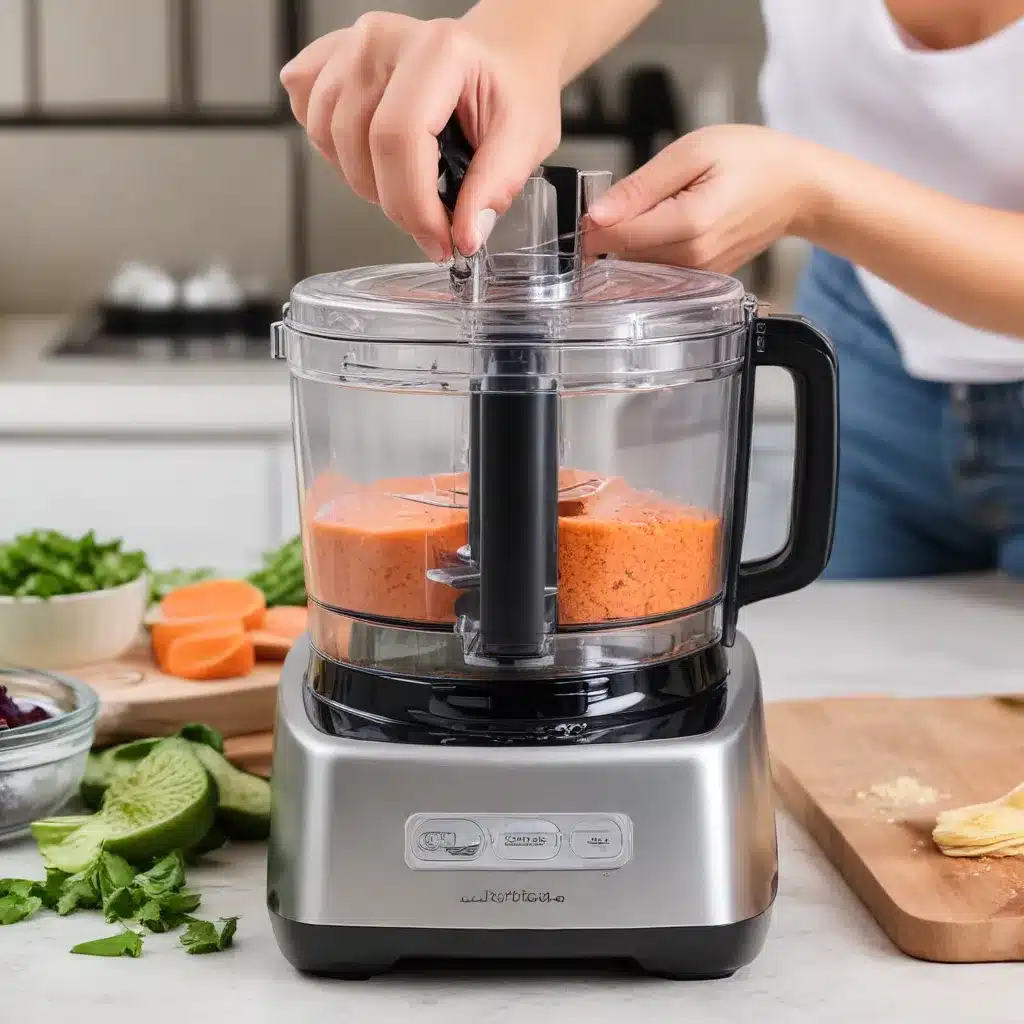
As a seasoned culinary professional, I’ve seen firsthand the importance of maintaining kitchen equipment to ensure optimal performance and longevity. One of the most versatile and indispensable tools in any kitchen is the food processor. These powerful appliances can tackle a wide range of tasks, from chopping vegetables to emulsifying sauces. However, like any piece of equipment, a food processor requires proper care and maintenance to continue functioning at its best.
In this comprehensive guide, we’ll explore the essential steps for disassembling, cleaning, and lubricating your food processor to extend its lifespan and keep it running smoothly. Whether you’re a professional chef or a passionate home cook, these tips will help you get the most out of your investment.
Disassembling Your Food Processor
Before you can properly clean and maintain your food processor, you’ll need to disassemble it into its various components. This process may vary slightly depending on the make and model, so be sure to consult your user manual for specific instructions.
Removing the Bowl and Lid
Start by unplugging your food processor and ensuring it is on a stable, flat surface. Gently twist the bowl to unlock it from the base, then lift it off. Next, remove the lid by pressing the release button (if present) or carefully lifting it off.
Detaching the Blades and Disks
Depending on your food processor, the blades and disks may be integrated into the bowl or attached to the base. Carefully remove these components, taking note of their orientation for reassembly later.
Accessing the Motor Base
With the bowl and accessories removed, you should now have access to the motor base. Inspect this area for any visible debris or buildup.
Cleaning Your Food Processor
Proper cleaning is essential for maintaining the performance and hygiene of your food processor. Follow these steps to ensure a thorough clean:
Handwashing the Removable Parts
Wash the bowl, lid, blades, and disks in warm, soapy water. Use a soft-bristle brush or sponge to gently scrub away any stuck-on food particles. Rinse thoroughly and dry completely before reassembling.
Cleaning the Motor Base
Wipe down the motor base with a damp cloth, being careful not to submerge it in water. Pay special attention to the housing, shaft, and other hard-to-reach areas, removing any crumbs or residue.
Disinfecting the Components
For added sanitization, you can soak the removable parts in a diluted bleach solution (1 teaspoon of bleach per 1 cup of water) for 5-10 minutes. Rinse thoroughly and dry completely before reassembling.
Avoiding the Dishwasher
While some food processor parts may be dishwasher-safe, it’s generally recommended to hand-wash them. The high heat and harsh detergents in a dishwasher can potentially damage the materials or cause discoloration over time.
Lubricating Your Food Processor
To keep your food processor running smoothly and prevent excessive wear, it’s important to lubricate the moving parts periodically. This simple maintenance task can significantly extend the lifespan of your appliance.
Identifying the Lubrication Points
Consult your user manual to locate the specific areas that require lubrication, such as the shaft, gears, or bearings. These are typically the points where the motor interfaces with the removable components.
Applying Food-Grade Lubricant
Use a small amount of food-grade lubricant or mineral oil to lightly coat the identified lubrication points. Avoid using household oils or grease, as they may not be suitable for food preparation equipment.
Redistributing the Lubricant
Reassemble the food processor and run it for a few minutes to distribute the lubricant evenly throughout the internal mechanisms. This will help ensure smooth operation and reduced friction.
Timing Your Lubrication
Depending on the frequency of use, you should aim to lubricate your food processor every 3-6 months or as recommended by the manufacturer. This will help maintain its performance and extend its lifespan.
Maintaining Your Food Processor
In addition to regular disassembly, cleaning, and lubrication, there are several other maintenance tasks you can perform to keep your food processor in top shape:
Inspecting for Wear and Tear
During the cleaning and lubrication process, carefully inspect all components for signs of wear, such as dull blades, cracked seals, or loose parts. Address any issues promptly to prevent further damage.
Sharpening the Blades
Over time, the blades in your food processor can become dull, reducing their efficiency and increasing the risk of injury. Consult the manufacturer’s instructions for proper blade sharpening or replacement.
Addressing Unusual Noises or Vibrations
If you notice any unusual noises or excessive vibrations coming from your food processor, it could be an indication of a deeper issue. Discontinue use and seek professional assistance to diagnose and resolve the problem.
Maintaining a Regular Cleaning Schedule
Consistent cleaning and maintenance are key to prolonging the life of your food processor. Establish a routine cleaning schedule based on the frequency of use, and make it a habit to thoroughly clean the appliance after each use.
By following these best practices for disassembly, cleaning, and lubrication, you can ensure your food processor continues to perform at its best for years to come. Investing a little time and effort into regular maintenance will not only extend the life of your kitchen workhorse but also help maintain the quality and safety of your food preparation.
Remember, if you encounter any issues that you’re unsure how to resolve, it’s always better to consult a professional for guidance. The Kitchen Warrior team is here to provide expert advice and assistance to help you get the most out of your culinary equipment.


